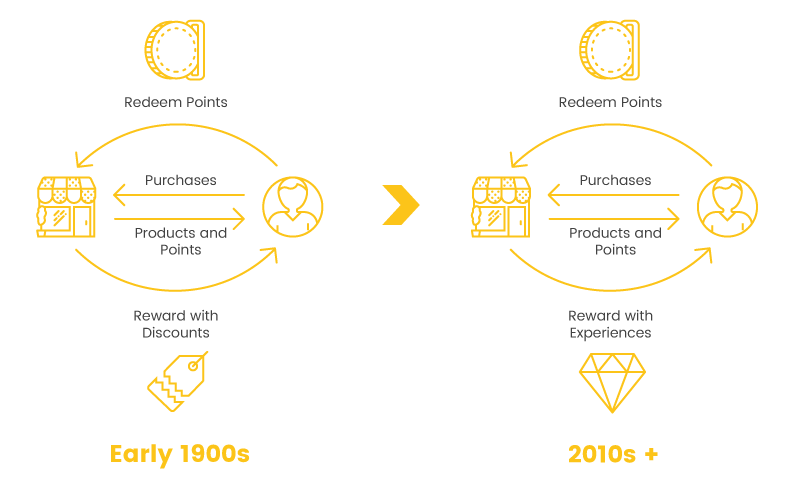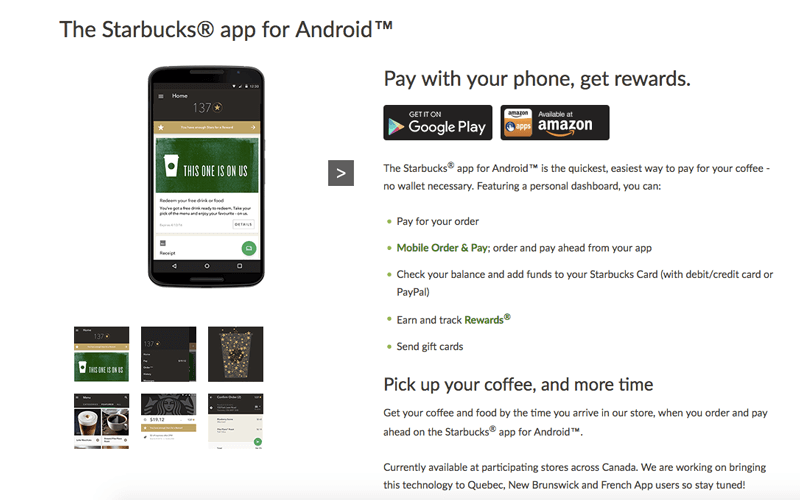No matter how good an idea is, chances are it won’t succeed unless it’s adaptable. Even a successful brand like Disney is challenged to evolve, evident through their transition from traditional 2D animation to the rapidly-expanding capabilities of 3D.
This ability to amend brand strategies is the key to longevity no matter the industry and as you probably guessed, customer loyalty is no different. While this need has been addressed before, the release of applications like Pokemon Go have left a lot people wondering what’s coming down the pipe, and I’ve taken it upon myself to answer that question.
Anticipating the Next Big Thing in Loyalty Programs
In a recent survey, 65% of the CMO Council agreed that investing in loyalty strategies is essential for successful marketing going forward. These types of stats make it clear that things are going to heat up in the realm of loyalty – sooner rather than later.

Although I’d like to have the ability to see the future I am currently lacking those skills, which means my predictions are based on industry trends and thoughts from other leaders in the loyalty community.
1. Increase in Gamification Strategies
I don’t know about you, but it seems like all of my friends are obsessed with games. Whether it’s board games, video games, or augmented reality apps, everyone is constantly in competition with each other. Social scientists believe that competition is one of the most basic functions of human nature, making it unsurprising that this type of behaviour is often exhibited in our everyday lives.
While it may be hard to believe, shopping is already pretty much a competitive sport.
Think about it: there’s a real sense of pleasure that comes from buying the last shirt in your size, or picking up the last Disney Animator’s Collection doll off the shelf. This sense of satisfaction is a powerful motivator that will draw potential customers to brands offering the opportunity to win.
The introduction of competitive angles has already started in many industries. Brands like Sephora have developed loyalty programs that challenge their customers to spend a certain amount per year in order to achieve a particular customer status.

Other retailers give customers the opportunity to curate a collection of products and share it with others as a way of earning rewards. The more people like their collection, the better the rewards. These types of programs encourage and allow customers to build communities, satisfying their desire for more frequent interaction with the brands they love.

As consumers’ hunger for games continues to grow more and more brands will begin to harness the power of that collective competitive edge, and with evidence that this strategy works for the world’s best brands you can bet more businesses will follow suit in the future.
2. More Experiential Rewards
A recent survey found that a whopping 63% of customers prefer loyalty programs that offer exclusive access to products or services. This clearly indicates that not all customers are simply looking for discounts, and that variety is a huge draw to participating in a loyalty program.

This shift from transactional to experiential rewards has been evident throughout the history of loyalty programs. Beginning with stamp and box top products in the early 1900s, rewards have slowly but surely been swinging towards offering a “soft” benefits selection, including special events and complimentary services like gift wrapping.

Understanding customer data is largely responsible for this changing trend, and data analysis has become a lot more prevalent as competition continues to grow in various industries. Awesome loyalty apps like Smile.io give merchants the ability to see which rewards customers are redeeming for, allowing them to better understand what their customers are looking for in a program.
In response to this data, more brands are beginning to understand the power of status. Tied closely to the gamification principle I mentioned before, social standing is the ultimate reward for many people, making tiers a necessity for successful loyalty programs moving forward.

Offering these types of rewards continues to hold value at the core of the loyalty program while also shifting emphasis to a customer’s individual desires. By giving customers multiple options, they are able to personalize their rewards experience and feel that their needs are being acknowledged and met. This acknowledgement of customer preference strengthens the relationship between the customer and the brand, solidifying a loyal customer for life.
3. Technological Advancements
It’s no secret that people love mobile devices. In fact, surveys have found that the average person spends 90 minutes a day on their phone, adding up to around 23 days a year. With apps for just about everything, people have become accustomed to the immediacy and convenience that technology provides.

These social trends have led to termination of many punch card loyalty programs, because people simply don’t want to carry cards anymore. This change has prompted many companies to continue growing their rewards programs online, allowing customers to access them through the internet or on a mobile app to alleviate the pain point physical cards presented.
Starbucks even took this concept one step further, and built a loyalty app that allows customers to pay directly from their phone. By loading money onto the app via credit card, customers simply have to present their phone to be scanned by a barista in order to complete their transaction.

Mobile wallets are the next logical extension for loyalty apps. Not only does it make it easier for customers to spend money at your store, but it also costs less in the long run! By lowering the amount of operational management required to run your loyalty program, your company will incur lower operational costs and retain higher profitability.

While the technological limits make this type of structural change more difficult to implement, the reality is it’s the solution for customers’ demand for easier engagement options. As people continue to want more control over their interactions with brands, loyalty programs will need to evolve to create easier channels for doing so.
The Future of Loyalty Programs is Bright
Being a loyalty expert, it’s encouraging to see evidence that more brands are beginning to recognize the necessity of retention strategies. As more companies continue to dip their toes in the proverbial pool of loyalty and experiment with strategies like gamification, experiential rewards, and advanced mobile apps, the possibilities for loyalty marketing and solutions will continue to grow.

Like they say on the Carousel of Progress at Walt Disney World, “there’s a great big beautiful tomorrow”, and customer loyalty is going to lead the way!








